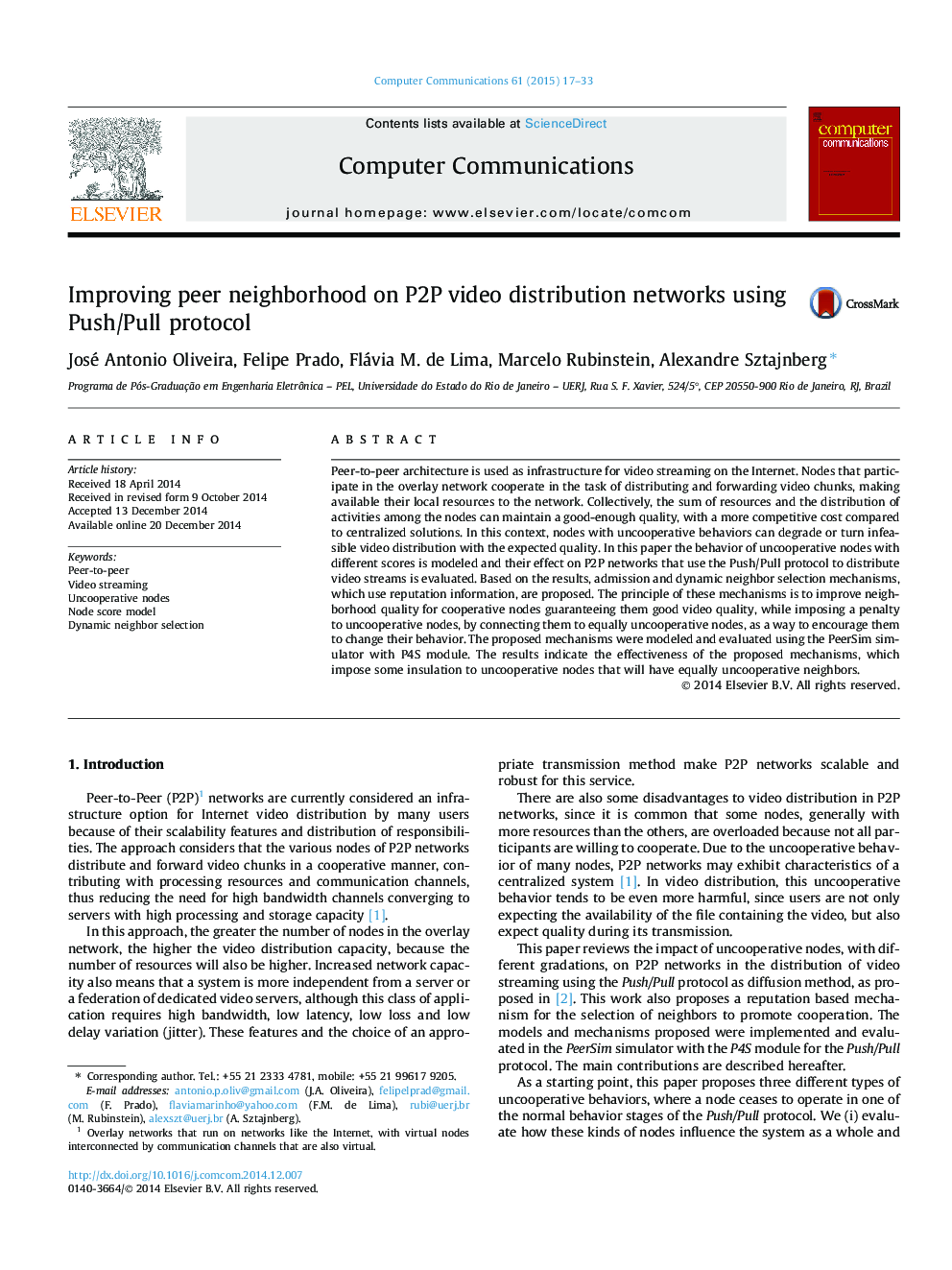| Article ID | Journal | Published Year | Pages | File Type |
|---|---|---|---|---|
| 445866 | Computer Communications | 2015 | 17 Pages |
Peer-to-peer architecture is used as infrastructure for video streaming on the Internet. Nodes that participate in the overlay network cooperate in the task of distributing and forwarding video chunks, making available their local resources to the network. Collectively, the sum of resources and the distribution of activities among the nodes can maintain a good-enough quality, with a more competitive cost compared to centralized solutions. In this context, nodes with uncooperative behaviors can degrade or turn infeasible video distribution with the expected quality. In this paper the behavior of uncooperative nodes with different scores is modeled and their effect on P2P networks that use the Push/Pull protocol to distribute video streams is evaluated. Based on the results, admission and dynamic neighbor selection mechanisms, which use reputation information, are proposed. The principle of these mechanisms is to improve neighborhood quality for cooperative nodes guaranteeing them good video quality, while imposing a penalty to uncooperative nodes, by connecting them to equally uncooperative nodes, as a way to encourage them to change their behavior. The proposed mechanisms were modeled and evaluated using the PeerSim simulator with P4S module. The results indicate the effectiveness of the proposed mechanisms, which impose some insulation to uncooperative nodes that will have equally uncooperative neighbors.
